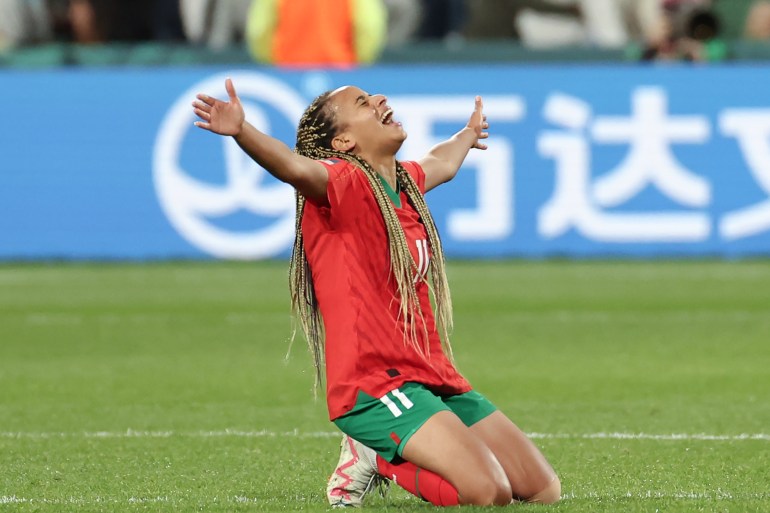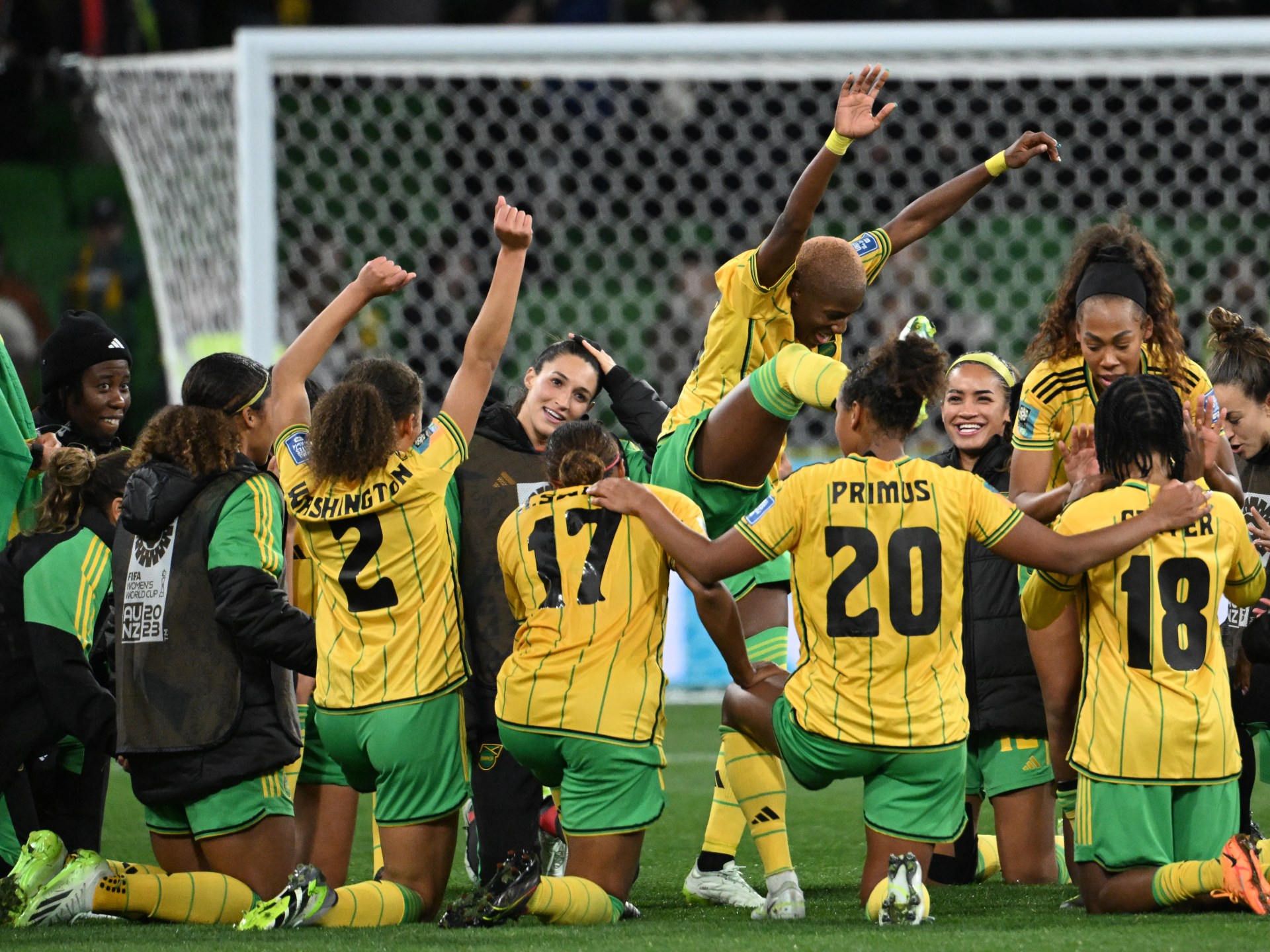More teams, more upsets: How minnows challenged giants at Women’s World Cup | Women’s World Cup News
Four years ago, when it was announced that the Women’s World Cup would be expanded from 24 teams to 32, the idea was met with scepticism.
At the time, minnows Thailand had just been thrashed 13-0 by four-time world champions USA, and many were concerned the women’s game was not ready for a bigger pool.
It seems, however, the critics were wrong – as this year’s Women’s World Cup has shown.
With Olympic champions Canada, former world champions Germany and heavyweights Brazil all crashing out in the group stage and Jamaica, South Africa and Morocco making history by advancing to the knockout stage for the first time, the 2023 tournament in Australia and New Zealand has been both competitive and full of upsets.
Jane Purdon, director of the Women in Football organisation, told Al Jazeera the expansion to the 32-team format “has been a brilliant success”.
“The reasons are that many federations have increased their strategic support to women’s football. In addition, elite leagues are expanding and growing, providing professional training and playing environments week in, week out for the best players in the world,” said Purdon, author of The Homecoming: The Lionesses and Beyond.
The results have not only silenced the sceptics but also bucked the rankings by the world governing body FIFA, which are typically dominated by the USA and teams from Europe.
According to Lisa Neirotti, associate professor and director at the Sports Management Programs at George Washington University, the accuracy of the rankings could be skewed because some of the low-ranked teams do not play as many games as other teams.
A report (PDF) last month by the world players’ union Fifpro revealed that in the build-up to the Women’s World Cup, European teams had played twice as many matches as those in Asia and the Caribbean over the past 10 months.
“Not all countries have women’s professional football, so it could be difficult for scouts to evaluate players and teams accurately,” Neirotti said.
“On the contrary, countries without women’s professional football leagues have an opportunity for the national team players to play together more. They have been playing together for much longer versus teams where players come together for only short training camps and competitions.”
Overcoming adversity
While some low-ranked countries, such as 72-placed Morocco, benefitted from the increased support from their federations, others excelled despite the off-field issues they are facing.
Jamaica had to rely on a fundraising campaign arranged by the mother of one of their players to cover the team’s travel costs while Nigerian players were in a pay dispute with their federation in the lead-up to the tournament.
“Some federations deserve no credit for their teams’ success. FIFA should set minimum criteria for national federations’ support of their women’s teams and enforce them,” Purdon said.
“Federations should ensure that players have the best possible chance for these big tournaments, and this includes making sure that they’re prepared mentally without the distraction of disputes with the federation.”
The Jamaican team, nicknamed the Reggae Girlz, finished second in their group before losing to Colombia in the last 16 while Nigeria suffered a heartbreaking defeat on penalties to England after a great performance in regulation time.

South Africa also came second in their group, which included Italy, before they lost to the mighty Netherlands in the last 16 while Morocco’s dream run has been one of the highlights of the tournament.
The Atlas Lionesses made it to the knockouts in their maiden appearance, bouncing back from an opening game 6-0 hammering by Germany to beat both South Korea and Colombia and finish second in their group before losing to France in the round of 16.
The team’s exciting performances are seen as a result of investment and the formation of two professional leagues three years ago as part of a broader plan to boost the status of women’s football in Morocco.
“African teams have improved their grassroots development programmes, player pathways and coaching quality, resulting in the emergence of talented players who can compete at the highest level,” said Lungile Matsuma, a multimedia journalist from South Africa. “Also, the passion for football in Africa, combined with a strong sense of national pride, often drives teams to excel when representing their countries at major tournaments.”
Looking ahead, Neirotti said FIFA needs to push associations to ensure equal funding for both men’s and women’s football in the future.
“Without any public and private encouragement from FIFA leadership, football associations will try to reserve funds for themselves and other priorities they may deem important versus investing fully in women’s sport,” she added.
“What is important for this tournament is that these undiscovered teams have advanced and shown to the world that women globally are competitive and have excellent playing skills worthy of everyone’s attention.”




